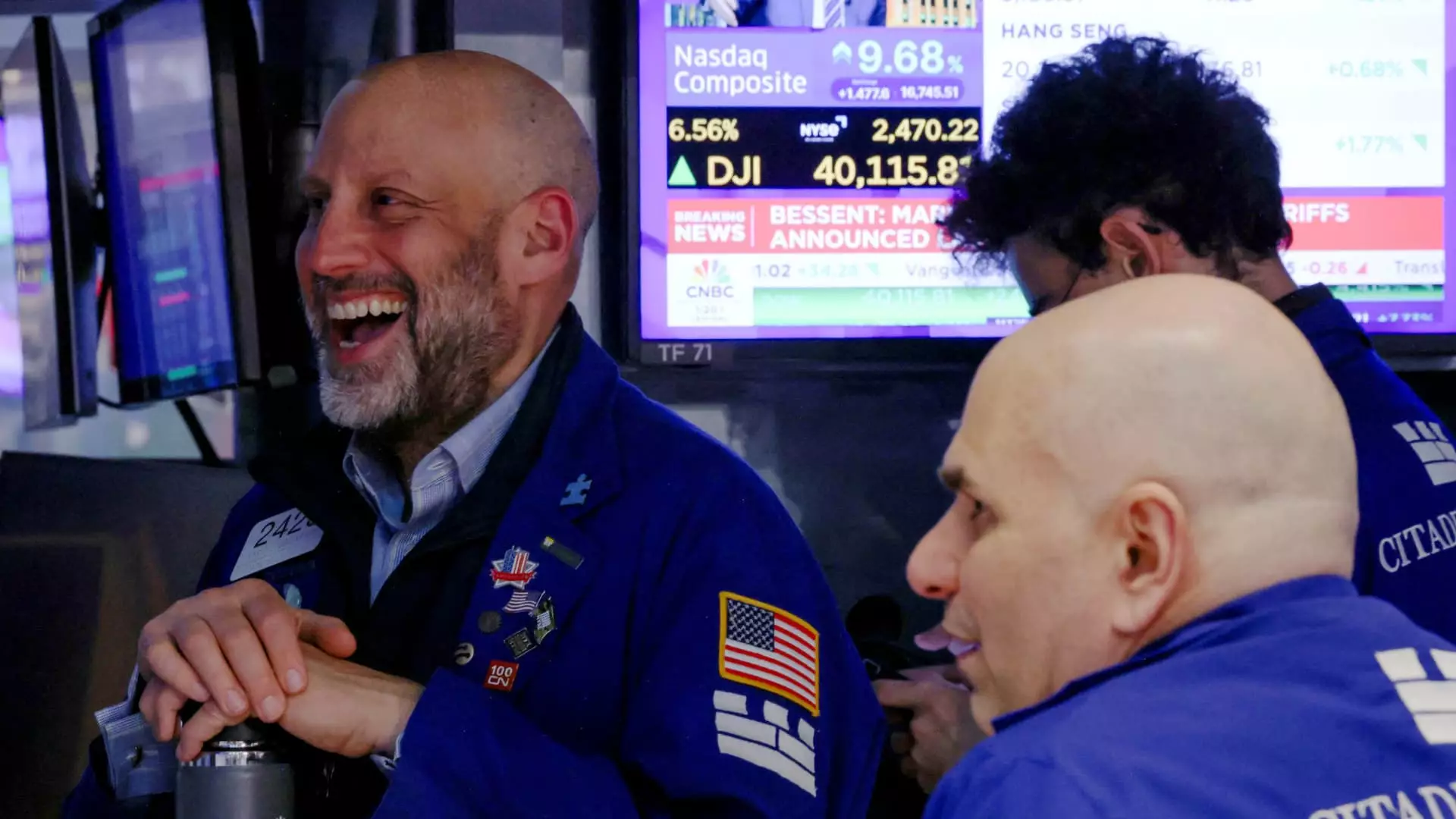Financial markets can often resemble a rollercoaster, but the recent surge triggered by President Donald Trump’s unexpected announcement of a 90-day pause on certain tariffs has entered a whole new realm of volatility. On a day that will be etched into the memory of investors, the Dow Jones saw an unprecedented increase of 3,028 points, soaring 8%, a spectacle that is often attributed to relief but also appears ripe with uncertainty. Meanwhile, the Nasdaq Composite experienced its most pronounced climb since the dawn of the millennium, spanning an exhilarating 12.4%. The S&P 500 followed suit with an eye-popping 9.3% gain—the largest jump observed in half a decade.
All these impressive statistics mask a broader, more disturbing narrative. This surge should not be mistaken for a long-term resolution; rather, it serves as a mere distraction from the underlying turbulence in trade relations. The reality of tariffs and escalating tensions continues to loom ominously over the market like a thundercloud ready to unleash a storm at any moment.
The Trade War Tug-of-War
While investors celebrate the reprieve offered by Trump’s announcement, one must confront the elephant in the room: the chronic instability surrounding U.S.-China trade relations. Trump’s tweet revealed a contradictory duality—responsibly pausing the reciprocal tariffs for everyone except China while simultaneously raising the tariff on China to a staggering 125%. How do we reconcile these mixed messages?
Treasury Secretary Scott Bessent’s clarification on the reinstated 10% tariff on most countries provides modest relief, but the fear remains: will this pause actually facilitate meaningful negotiations or simply delay the inevitable?
Moreover, politicians seem to conflate short-term gains with long-term strategies, evidenced by the euphoric market response. Yes, companies like Apple and Nvidia climbed back significantly after previous losses, but the underlying question remains: Is this rally sustainable? As Apple surged over 11% and Nvidia soared by 13%, one can’t help but wonder if investors are being swept up in a transient wave of optimism driven more by hope than sound economics.
Populism Meets the Boardroom
Trump’s strategy has often been described as populist in nature, and this recent fluctuation offers a perfect example. After all, his proclamation may encourage a public narrative that the economy is on an upswing, fostering a sense of false security. It’s one thing to encourage buying into a market that appears to be rallying, but it’s another to ignore the chaotic backdrop created by tariffs, sanctions, and the ever-present threat of trade wars.
Critics argue that the administration’s approach to trade has exacerbated tensions with allies and potential economic partners. The sentiment echoes through statements made by economists and market strategists alike, who caution that such fleeting gains are predicated upon uncertain factors. “Fool me once, shame on you; fool me five times, shame on me,” notes Sam Stovall from CFRA Research, shedding light on the cyclical nature of hope outweighing caution within the investor community.
The Inevitable Backlash
It is crucial to recognize the anxiety-driven market behavior witnessed over the prior weeks, encompassing a relentless four-day downturn that saw the Dow plunge more than 4,500 points and the S&P 500 drop by a staggering 12%. How quickly the narrative can shift from panic to euphoria showcases the foxhole mentality that pervades the trading floor. Traders rush in like a herded stampede toward every flicker of good news, only to be left wondering what might happen when the excitement fades.
Analysts have pointed out that while the immediate effects of this tariff pause may paint a rosy picture, investors are advised to keep their heads on a swivel. The complexities of trade tensions between countries extend beyond a 90-day timeframe and serve as a reminder that the foundation of this temporary high is shrouded in uncertainty, making this a perilous moment for those who might overlook the broader context of economic stability.
At the end of the day, one must question whether this jubilation in the financial markets is a precursor to genuine recovery or merely a mirage in a desert of discontent fueled by populist policies. The answer may not reveal itself until the dust settles, but for now, the world watches with bated breath.


Leave a Reply